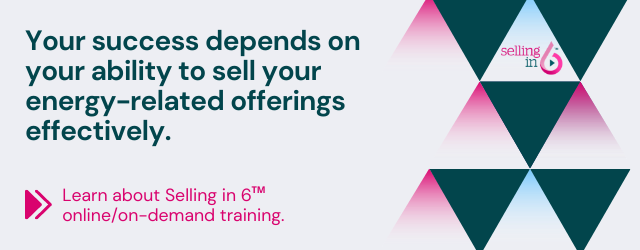Part 3 of our “Overcoming Objections” series addresses a very common objection in a non-residential landlord/tenant setting.

Objection: “My tenants pay for energy, so I would see no benefit.”
How to respond: First of all, let’s diagram the sentence. “My tenants pay for energy…” Stop right there! How exactly do they pay for energy? In many cases, you’ll find that the property manager is repeating a “myth,” not having read the lease himself and never having done a year-end “settle-up” report that allocates utilities (and other charges) to various parties. Moreover, what if the leases include a Capital Expense Cost Recovery clause that would allow the landlord to claw back some or all of the resulting savings until the upgrade’s first cost is fully repaid (in some cases, with interest)?
While we don’t have the space to provide all the details in this blog, here are some basics to start thinking about that will leave you better prepared to field this objection in the future:
There are gross leases, net leases, and fixed-base leases. You have to know the ins and outs of each of these. Over my 30 years of commercial real estate experience, my studied observation has been that the benefits of energy efficiency can almost always be allocated in a manner that rewards the party who pays for the improvement. Sometimes it’s the tenant, sometimes it’s the landlord, and sometimes it’s both. So, taking the summarily dismissive position, “Well, my tenants pay for energy, so I would see no benefit” … that’s just crazy talk. Here are just two of the many factors to ponder as you craft your response to this sort of objection:
First, if you’re creative, you can find a way to reallocate an upgrade’s utility cost savings so that it winds up in the pocket of the person who paid for the improvements (see Capital Expense Cost Recovery above).
Second, the benefits of increased tenant comfort and convenience and decreased tenant churn typically dwarf the utility cost savings anyway.
A comfortable tenant is a happy tenant. A happy tenant is less likely to move out than an unhappy one. Have you ever considered just how expensive tenant turnover can be for the landlord? You have lag vacancy (looking for a new tenant)… build-out vacancy (building out the space for the new tenant)… free rent period (often necessary to induce the new tenant to sign a multi-year lease)… the cost of reconfiguring the space to meet the needs of the new tenant… the leasing commission… other accounting and legal costs… and let us not forget the disruption caused by the move-out/move-in.
Even if a tenant does pay for energy and would be entitled to capture the savings from any contemplated upgrade without recourse by the landlord, that’s not necessarily a bad outcome. Think about it. The tenant would enjoy lower energy bills (which would reduce their overall occupancy cost and position them to be more qualified to pay rent). In many cases, they would get improved comfort and convenience to boot!
And what happens when the tenant’s employees experience the improved comfort and convenience associated with the upgrade? They’ll stop pining for a different office! On top of it all, a happy, comfortable employee is more productive and profitable, which makes the tenant better able to pay its rent (and potentially less resistant to increases in base rent when the time comes for that tenant to renew).
It’s a complicated picture, for sure. However, when a landlord says, “My tenants pay for energy, so I would see no benefit,” be ready to ask questions that will help you ascertain the real story so that you can educate your prospect and help him/her make a better decision.
As General Dwight D. Eisenhower once said (I’m paraphrasing here), “Whenever I find a problem that is seemingly intractable, I almost always find it easier to solve it if I make the problem bigger.” Why? Because the root cause is often somewhere other than where the symptoms are being manifested. In the context of fielding objections regarding who pays and who benefits, it’s often the case that a better understanding of the business dynamics of leasing and appraisal would open the door to a refreshingly simple and compelling solution. Check out our Segment Guides™ offering (which contains a robust introduction to Commercial Real Estate) and our Selling in 6™ offering that contains dozens of lessons on the jargon, yardsticks and sound bites that both landlords and tenants will find relevant and compelling.







